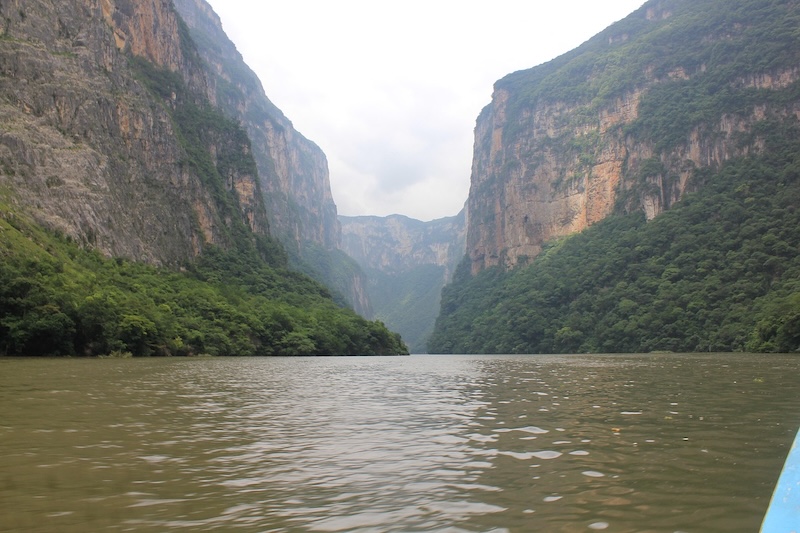As Mexico grapples with intensifying droughts and uneven water distribution, sustainable water management is emerging as a critical solution. Under President Claudia Sheinbaum’s leadership, the country is working to enshrine access to clean water as a fundamental right, yet outdated infrastructure, fragmented governance, and limited financing models continue to pose major hurdles.

In recent years, Mexico has experienced periods of drought that have put significant pressure on the country’s water supply. The government, under the leadership of its president, Claudia Sheinbaum, has made access to clean water a human right and implemented projects to boost water security across the country.
However, Mexico’s problems are not simply a result of water scarcity but also a consequence of poor governance and infrastructure management, as Tamara Luengo Schreck told Aquatech Online.
The founder of Aqueducto, a comprehensive consultancy firm specialising in water resource management, explains why sustainable practices are vital for ensuring the president’s vision is met.
Mexico faces profound territorial and social disparities when it comes to water availability and access, as Schreck explains: “Two-thirds of the country's freshwater resources are concentrated in just one-fourth of its territory, particularly in the southeast, while the most densely populated and industrialized areas, such as the central and northern regions, suffer from chronic water stress.”
These geographic imbalances are compounded by stark inequalities in social access: 1-in-10 people in Mexico lack access to potable water; 1-in-3 do not have access to adequate sanitation.
Two-thirds of the country's freshwater resources are concentrated in just one-fourth of its territory - Schreck
Moreover, the degradation of water sources is accelerating. A fifth of the country’s aquifers are overexploited, and approximately 45 per cent of surface water bodies are contaminated, often due to untreated wastewater discharges, agricultural runoff, and industrial pollution. These environmental pressures have a direct impact on the health of ecosystems, the resilience of communities, and the viability of long-term development.
However, Mexico's water crisis is not simply a matter of scarcity; it is a crisis of governance and management.
Schreck explains further: “The current institutional, regulatory, and financial models are no longer adequate to address the complex and multidimensional nature of the problem.”
She adds: “Transitioning to more sustainable water management models is essential not only for improving access and efficiency but also for enhancing climate resilience, promoting social equity, and securing the long-term sustainability of the country’s territories and economies.”

Water services, including drinking water supply, sanitation, and wastewater treatment, are primarily financed through public funding.
Schreck explains that this structure stems from the country’s regulatory and legal frameworks: “These assign responsibility largely to municipal governments and often limit or restrict private sector participation, particularly in drinking water provision. As a result, most water utilities operate under public control and rely heavily on budget allocations, user fees, and subsidies to cover operational and infrastructure costs.”
Regulatory environment for water PPPs in Mexico varies significantly by state and municipality - Schreck
Public-private partnerships (PPPs) have been employed to finance large-scale infrastructure projects such as dams, aqueducts, desalination facilities, and treatment plants. These models allow for the integration of private sector innovation and expertise, while the public sector maintains regulatory oversight and ensures tariff policies that promote equitable service delivery.
“It is important to note that the regulatory environment for water PPPs in Mexico varies significantly by state and municipality,” cautions Schreck. “While some jurisdictions have established clear frameworks for private participation, others remain cautious or restrictive. This fragmented landscape creates uncertainty and uneven opportunities for private investment.”
According to Schreck, one of the key challenges of Mexico’s current financing model for water is its heavy reliance on public resources, which constrains the ability of utilities and governments to adopt more advanced, resilient, or long-term solutions.
“Many water utilities operate with limited technical and financial capacity, and frequent changes in political leadership (every three or six years) create discontinuity, discourage long-term planning, and increase the risk associated with infrastructure investment.”
From the perspective of private sector participation, there are several additional barriers.
“First, there is often a lack of clarity or consistency in the legal frameworks governing PPPs, which affects investor confidence,” Schreck explains. “Second, institutional weaknesses, such as limited transparency, insufficient accountability mechanisms, and bureaucratic inefficiencies, can undermine the effectiveness of these partnerships.”
Many water utilities operate with limited technical and financial capacity - Schreck
If the public partner is unable to enforce contractual obligations, ensure financial solvency, or maintain quality standards, the success of the entire scheme is jeopardised.
Another critical issue is the lack of robust risk mitigation instruments. Private actors often require guarantees, whether financial, regulatory, or political, to enter into long-term agreements. The absence of such instruments increases the perceived risk and reduces the attractiveness of water investments, particularly in underserved or vulnerable areas where returns may not be immediate or guaranteed.
One notable trend, Schreck adds, is the emergence of hybrid models that combine public oversight with private-sector innovation, particularly in wastewater treatment and reuse. These models are increasingly aligned with principles of the circular economy, focusing on resource recovery (such as biogas or nutrient extraction) and the valorisation of treated water for industrial, agricultural, or urban uses.
“At the same time, international development banks, climate finance institutions, and other organisations have become more active in supporting pilot projects and blended finance mechanisms that de-risk investment in the water sector,” she adds. “These actors often play a catalytic role by offering concessional loans, technical assistance, or co-financing structures that enable more ambitious and sustainable water projects.”

Schreck is clear that Mexico needs to adopt a new financing paradigm that enables innovation, encourages long-term investment, and supports equitable access across regions. This requires moving beyond traditional public procurement and toward more flexible, integrated models that reflect the complexity of water systems and the urgency of climate adaptation.
She explains that there are four strands to this transition: “First, financial models must evolve to incorporate principles of the circular economy. This means recognising the value of water, not just as a commodity to be delivered, but as part of a regenerative system in which waste becomes a resource. For example, sanitation infrastructure can be designed to recover energy from sludge, extract nutrients for agriculture, and reclaim water for reuse, thereby generating multiple revenue streams that enhance financial sustainability.”
Financing mechanisms need to be tailored to local contexts, enabling decentralised, small- and medium-scale solutions that are more affordable and responsive to community needs. “These can include nature-based solutions, modular treatment systems, or rainwater harvesting technologies that reduce pressure on central infrastructure,” she adds.
Rather than viewing sustainability as a cost, it must be positioned as a strategic investment in risk reduction, operational continuity, and long-term competitiveness - Schreck
Third, public-private collaboration needs to be reimagined.
“Rather than viewing sustainability as a cost, it must be positioned as a strategic investment in risk reduction, operational continuity, and long-term competitiveness,” Schreck says, which needs to be combined with new partnership models that designed to align public objectives, private incentives, and community benefits through performance-based contracts, shared savings schemes, or co-investment structures.
Schreck concludes: “Lastly, Mexico must strengthen its institutional frameworks to ensure transparency, accountability, and citizen participation in water financing. Only through a trusted governance environment can sustainable financing truly flourish; one that not only attracts capital but also channels it toward inclusive and impactful outcomes.”
New financing models can play a catalytic role in transforming Mexico’s water sector by enabling innovative, decentralised, and sustainable solutions that are better suited to local needs and long-term resilience.
These models are built around two fundamental paradigms: the circular economy and the concept of water as a service.
The ‘Water-as-a-Service’ model shifts the focus from infrastructure ownership to service delivery, Schreck explains. “Instead of municipalities or industries investing upfront in the design, construction, and operation of water treatment systems, they can contract private providers to deliver treated water or wastewater services over a fixed period.”
This approach reduces capital expenditure for the client, transfers operational risk to specialised providers, and allows private actors to make long-term investments in efficiency, innovation, and sustainability.
Financing in this context is used not only to build and operate treatment plants, but also to integrate energy recovery systems - Schreck
Circular economy-based models treat wastewater not as a liability but as a valuable resource. Through appropriate technologies, it is possible to extract biogas, recover nutrients like phosphorus and nitrogen, and reuse treated water for agriculture, landscaping, or industrial processes.
“Financing in this context is used not only to build and operate treatment plants, but also to integrate energy recovery systems, sludge-to-compost conversion, and water reuse networks, creating diversified income streams that improve the financial viability of projects,” Schreck says. “Moreover, these models enable broader benefits: they lower operating costs over time, reduce environmental impact, and improve social acceptance.”
It can also be used to support infrastructure upgrades, smart monitoring technologies, capacity building for utility staff, and pilot programs that de-risk innovation. In the long term, such models make it easier for public institutions to deliver on their mandates while opening space for responsible private investment aligned with environmental and social outcomes.

Schreck believes that water services can be profitable in terms of building sustainable business models around use, treatment, and reuse.
“The key lies in shifting our mindset ¬– i.e. sustainability – should not be seen as a cost, but as a strategic investment in resilience, risk reduction, and long-term value creation for both society and the economy,” she explains.
According to Schreck, profitability in water-related services can be achieved through three main mechanisms:
Operational efficiency: Many water utilities and industries currently face high water losses, energy costs, and treatment inefficiencies. Investing in technologies and practices that optimise operations, such as smart metering, leak detection, and energy-efficient treatment, can yield significant cost savings and improved service delivery.
Revaluing subproducts: Through circular economy models, water projects can generate new revenue streams from the sale of biogas, compost, treated water, or industrial-grade inputs. This reduces dependency on traditional tariffs and subsidies, improving financial sustainability.
Performance-based contracting: By structuring public-private agreements around measurable outcomes, such as volume of water treated, energy generated, or pollution reduced, service providers can be incentivised to innovate and deliver value, while aligning with public policy goals.
Schreck believes that the adoption of new water financing models can generate substantial benefits for both communities and businesses across Mexico.
She says: “For people and communities, these models can support the development of more affordable, localised, and resilient infrastructure to uphold the human right to water and transition toward more equitable and just water management schemes.”
For businesses and industry, the benefits could be equally compelling.
“Companies that invest in water efficiency, reuse, and circular technologies are better positioned to meet regulatory requirements and compliance, secure their operations against water-related risks, and have preferential access to financing (such as ESG-linked loans), as well as business or commercial advantages stemming from a positive reputation,” Schreck concluded.
Mexico stands at a crossroads when it comes to water management. The challenges are significant, but so are the opportunities. A new generation of financing approaches, grounded in circularity, equity, and resilience, can unlock the systemic transformation that Schreck believes the country urgently needs.
To learn more about sustainable water management, visit Aquatech Mexico and explore this year’s edition of the event.